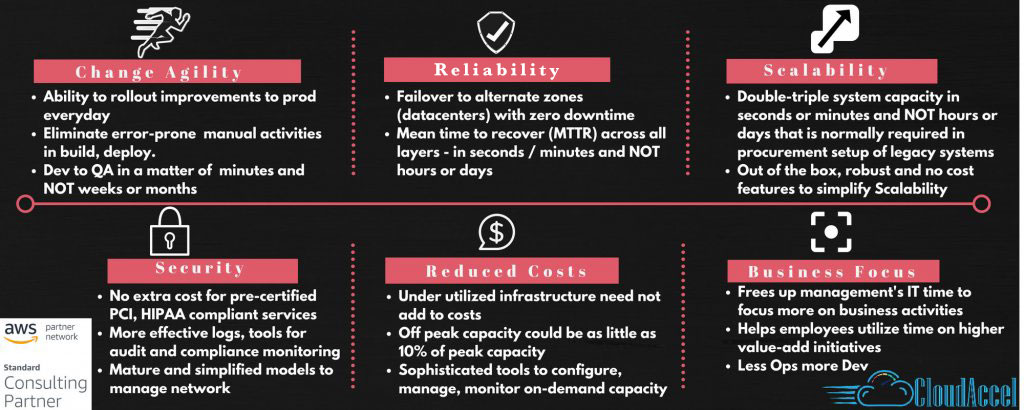Overview
The past few years have witnessed many businesses rushing to the cloud. The move has not been easy though. Organizations faced and continue to face numerous hurdles because of the complexity of modern IT applications, coupled with the scarcity of skills in cloud technologies. Having successfully adopted the cloud after enduring all the hardships, it is natural to wonder if the move to the cloud has been worthwhile for the organizations. Is moving from Capex model to Opex model the sole benefit to expect? Or are there other benefits to reap?
“Do organizations like Netflix at the forefront of cloud usage innovation see any benefits beyond what meets the eye?”
Challenge
Bloomz platform’s rich functionality helped spread its reputation, attracting a huge customer base. This in turn increased the application feature requests. As teams ramped up features development across the system, they kept hitting severe constraints imposed by their shared “QA, Staging environment”. Dev, QA, Ops had to continuously coordinate to deploy the changes. This :
- slowed down the teams
- delayed the release of features
- reduced productivity across all levels
which Bloomz could not afford in this growth phase.
On the surface, it may seem that Cloud just helps organizations offload critical data center operations that are non-differentiating and are non-core activities. Cloud does tremendously help with this aspect since managing a data center is no easy task warranting a skilled IT workforce and therefore, diluting the primary focus of the organization. However, cloud offers transformational benefits that are not immediately obvious.

Six compelling reasons for companies to adopt cloud services:
1. Change agility
Organizations at the forefront of cloud usage can roll out hundreds of enhancements per day. Only a handful of organizations had such an ability a decade ago. This agility, in turn, is driving business innovation into high gear. Businesses can experiment a lot faster, identify the combinations that work and quickly move to subsequent opportunities.
2. Reliability
With the scale of operation, all large cloud providers are able to offer features that significantly improve reliability:
- Cloud providers have better redundancy at each data center level from power supply to internet providers to internal networks and network devices etc.
- Organizations have fallback options of multiple independent datacenters within a region, and multiple regions within all major continents, with the ability to move applications from one region to another seamlessly.
- Organizations have access to sophisticated tools and technologies required to failover within a region, country or continent.
3. Scalability
Predicting data center capacity a few years ahead has always been a challenge. However, organizations across the spectrum face data explosion which has become even more daunting. At the same time, the value of scalability has been increasing. Data is the new oil. As new tools and algorithms are becoming available to extract intelligence to improve sales, improve product quality, reduce costs, etc. a fixed-sized data center can become a drag. Cloud alleviates the need for upfront capacity estimation. Cloud not only provides the scale when required but also the necessary tools to achieve the same at significantly lower costs.
4. Security
Cloud providers have been rolling out numerous innovations on the security front. From storage encryption that is security compliant to simplified modeling and rollout of network firewall rules, granular audit trails, tools to monitor network flows and real-time analytics and alerts, offer a more powerful array of controls to InfoSec teams. Achieving the same in an on-prem data center requires highly skilled System admins, Network admins and Security experts.
5. Reduced cost
Cloud enables organizations to run leaner IT. Organizations have been able to achieve a 90% reduction in off-peak cloud spend as compared to peak traffic cloud spend. Online systems operating 24×7 with peak traffic for 12 hours on weekdays have over 65% offpeak hours. For offline and batch processing systems, the off-peak hours could be even higher.
6. Business focus
Reliable and Secure IT infrastructure is as essential as electricity and phones to operate businesses. Similar to electricity, setting up and operating IT infrastructure is non-core and non-differentiating activity. An on-prem datacenter ties down an organization’s scarce and skilled talent in operations, in addition to taking precious time from management for oversight. Properly set up cloud frees up skilled employees to focus on activities of higher value-add, helps organization overall spend less time on operations and more time on development.





